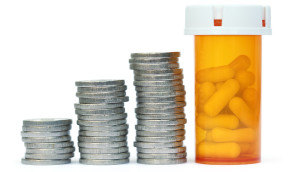AARP Hearing Center
Prescription Drug Costs Soar, Doubling in 7 Years
By Candy Sagon, February 29, 2016 02:04 PM

Thanks to drug manufacturer price hikes, the average cost for a year's supply of a prescription drug has jumped to more than $11,000, or about 75 percent of the average annual Social Security retirement benefit and half the median income of someone on Medicare.
This latest bad news for older patients' pocketbooks come from a new AARP Public Policy Institute report, which shows retail prices for widely used medications increased at six times the rate of general inflation in 2013. In addition, the prices of some generic drugs — traditionally the cheaper alternative to name brand versions — have also been rising.
Enter to win a Volvo V60 Cross Country, a national parks vacation for two and more.
The report, which looked at drug prices from 2006 to 2013, found that price increases were substantially higher in 2013. Between 2006 and 2012, prices rose 3.6 to 7.6 percent; in 2013, the average price increase for more than 600 brand name, specialty and generic drugs was 9.4 percent.
Brand name drugs in 2013 jumped nearly 13 percent, specialty drugs were up 10.6 percent, while generic drugs decreased by 4 percent. By contrast, the general inflation rate was 1.5 percent over the same period.
“If these trends continue, more and more Americans will simply be unable to afford the medications that they need to get and stay healthy,” said Debra Whitman, AARP’s chief public policy officer.
The newest report is the latest in a series that examines the retail prices of brand name, specialty, and generic prescription drugs most widely used by older Americans. The average retail price among these medications more than doubled from $5,571 in 2006 to a whopping $11,341 in 2013.
The price tag for specialty drugs, such as for cancer, hepatitis and rare diseases, soared the most. The average annual specialty drug cost $53,384 in 2013, 18 times the average annual cost for a brand-name drug at $2,960 and 189 times higher than the average annual price for a generic drug at $283.
Get discounts on prescriptions, health exams, eye care and more — AARP Member Advantages »
The price hikes hurt seniors in particular because in some circumstances Medicare plans can require patients to pay a share of the cost — sometimes up to 50 percent — instead of set co-pays. But it also affects employers and private insurers, in terms of high premiums, and taxpayers who fund programs like Medicare and Medicaid.
"It’s becoming clear that we can no longer rely on decreases in generic drug prices to offset unrelenting price increases for brand name and specialty drugs,” said AARP's Leigh Purvis, director of health services research and co-author of the new report. “This shift has serious implications for older adults and the entire health care system.”
Photo: Getty
Also of Interest
- Baby powder lawsuit raises questions about talc
- 11 Foods with the biggest nutritional bang for your buck
- Get Help: Find out if you're eligible for public benefits with Benefits QuickLINK
- Join AARP: savings, resources and news for your well-being
See the AARP home page for deals, savings tips, trivia and more.































































